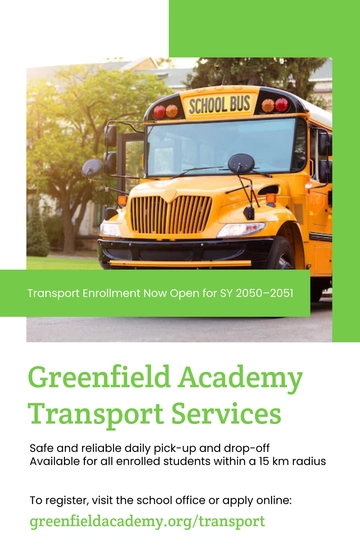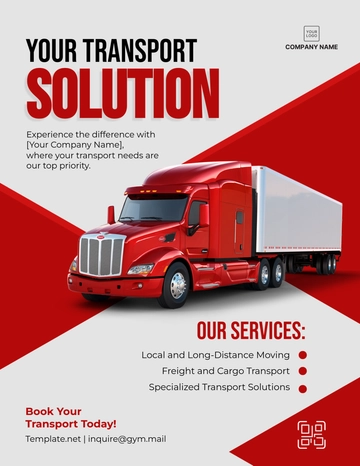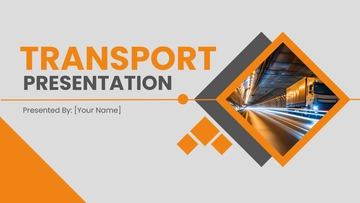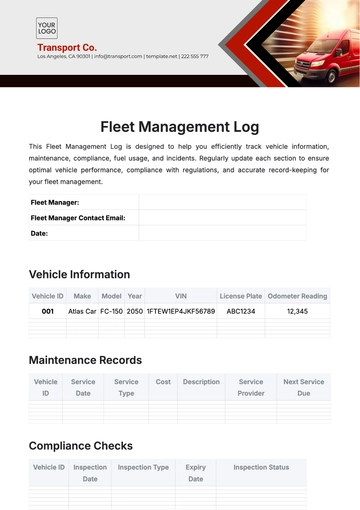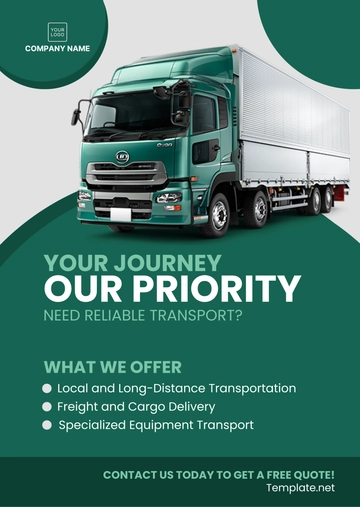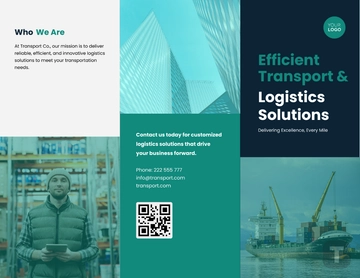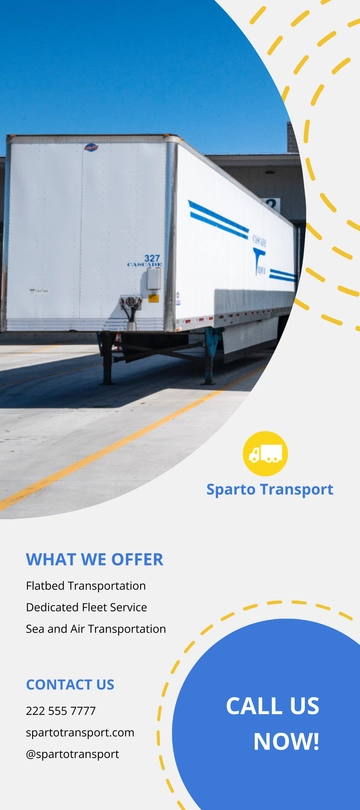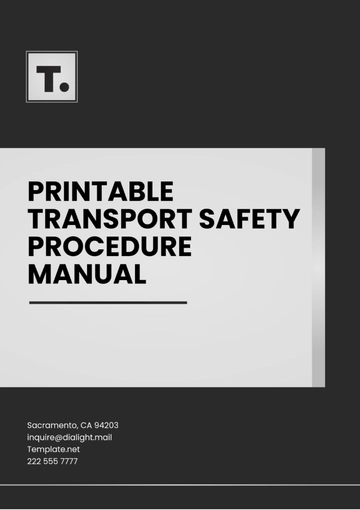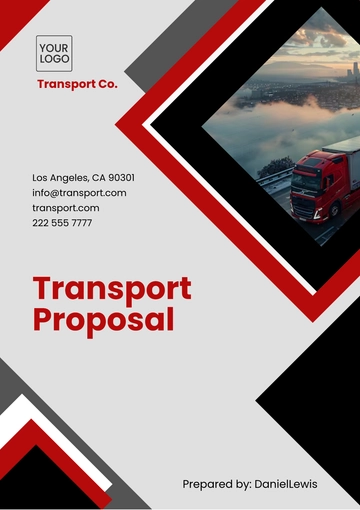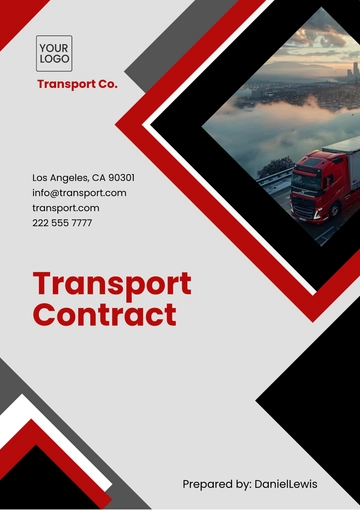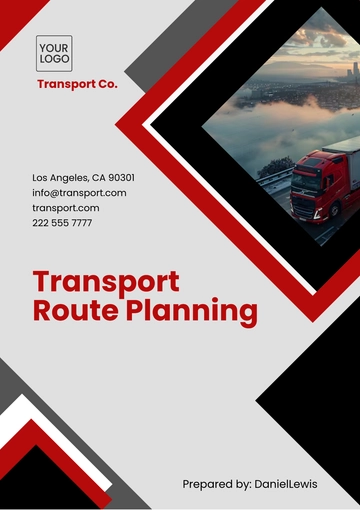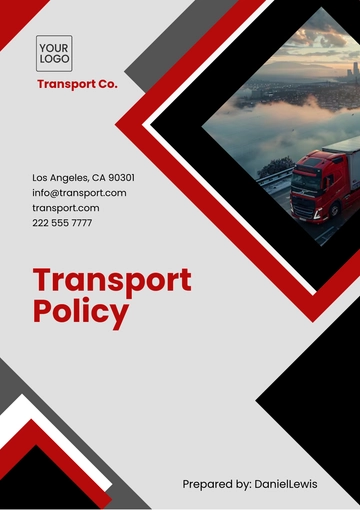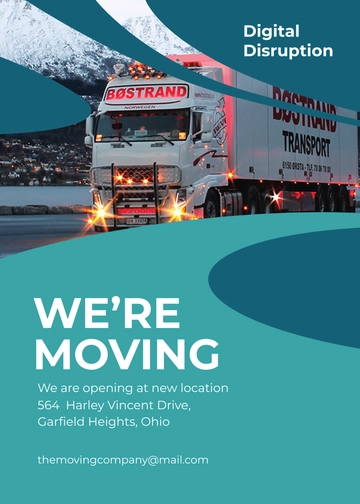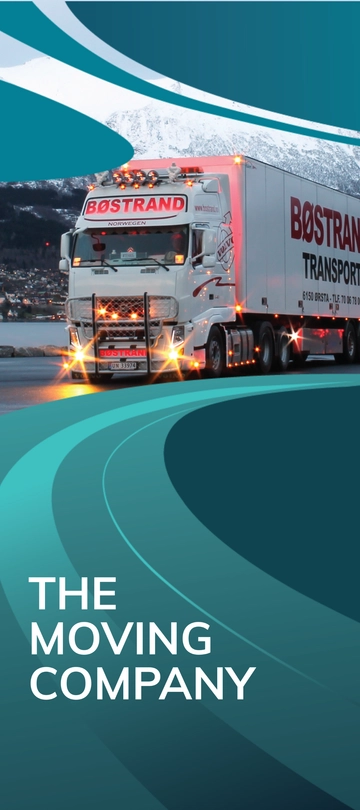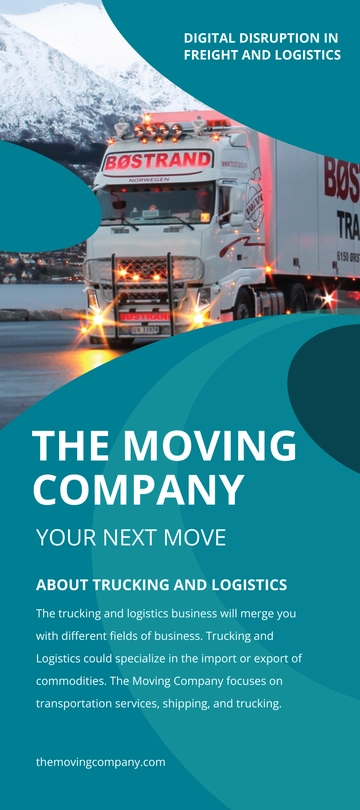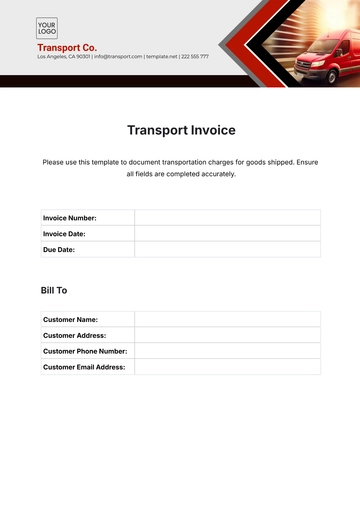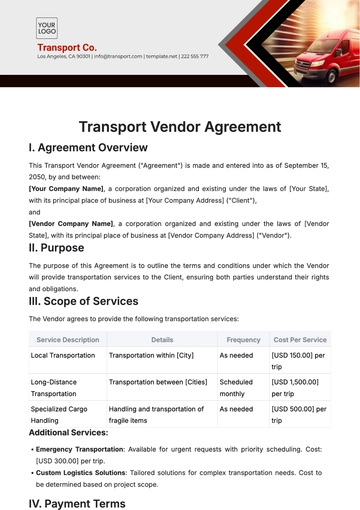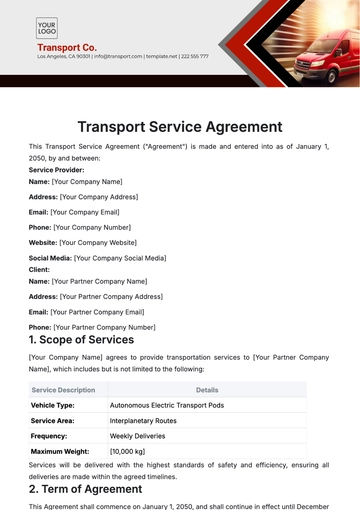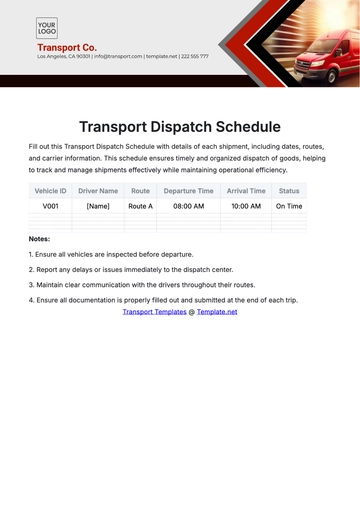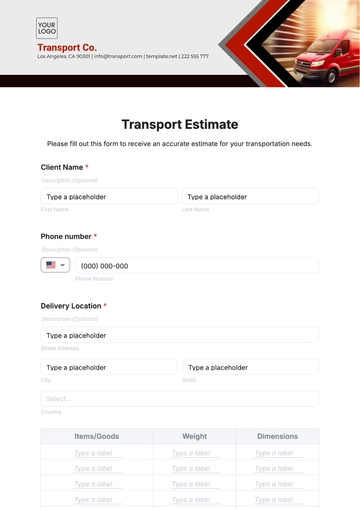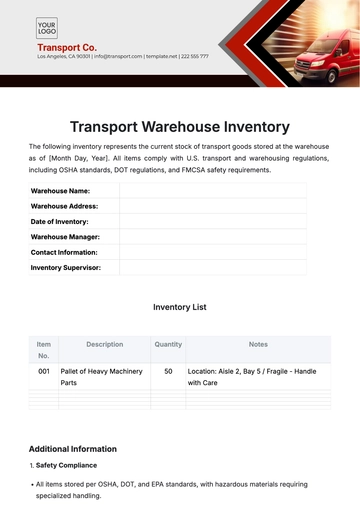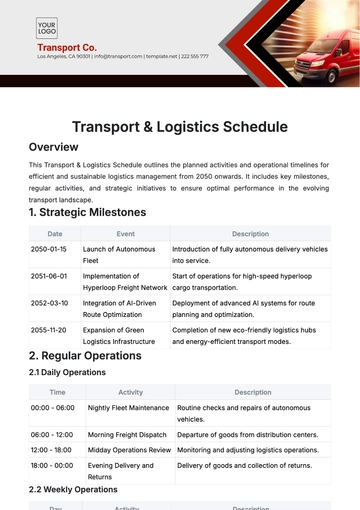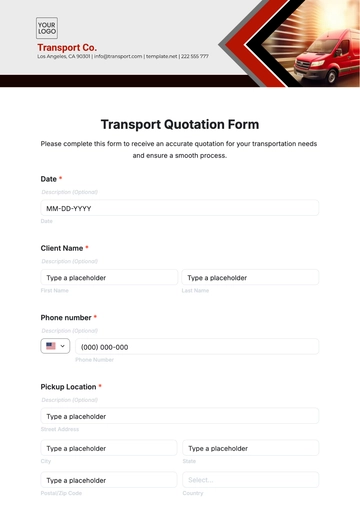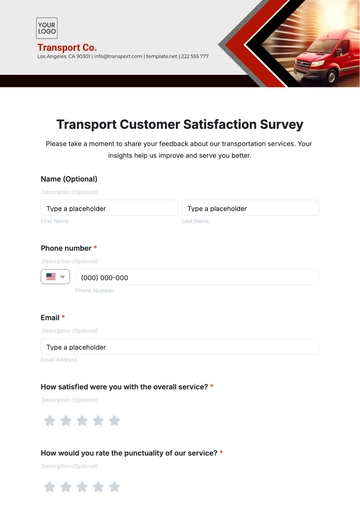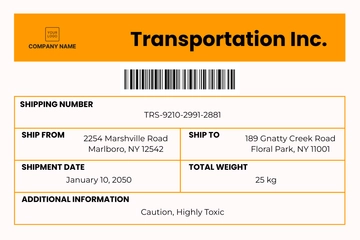Free Transport Route Planning
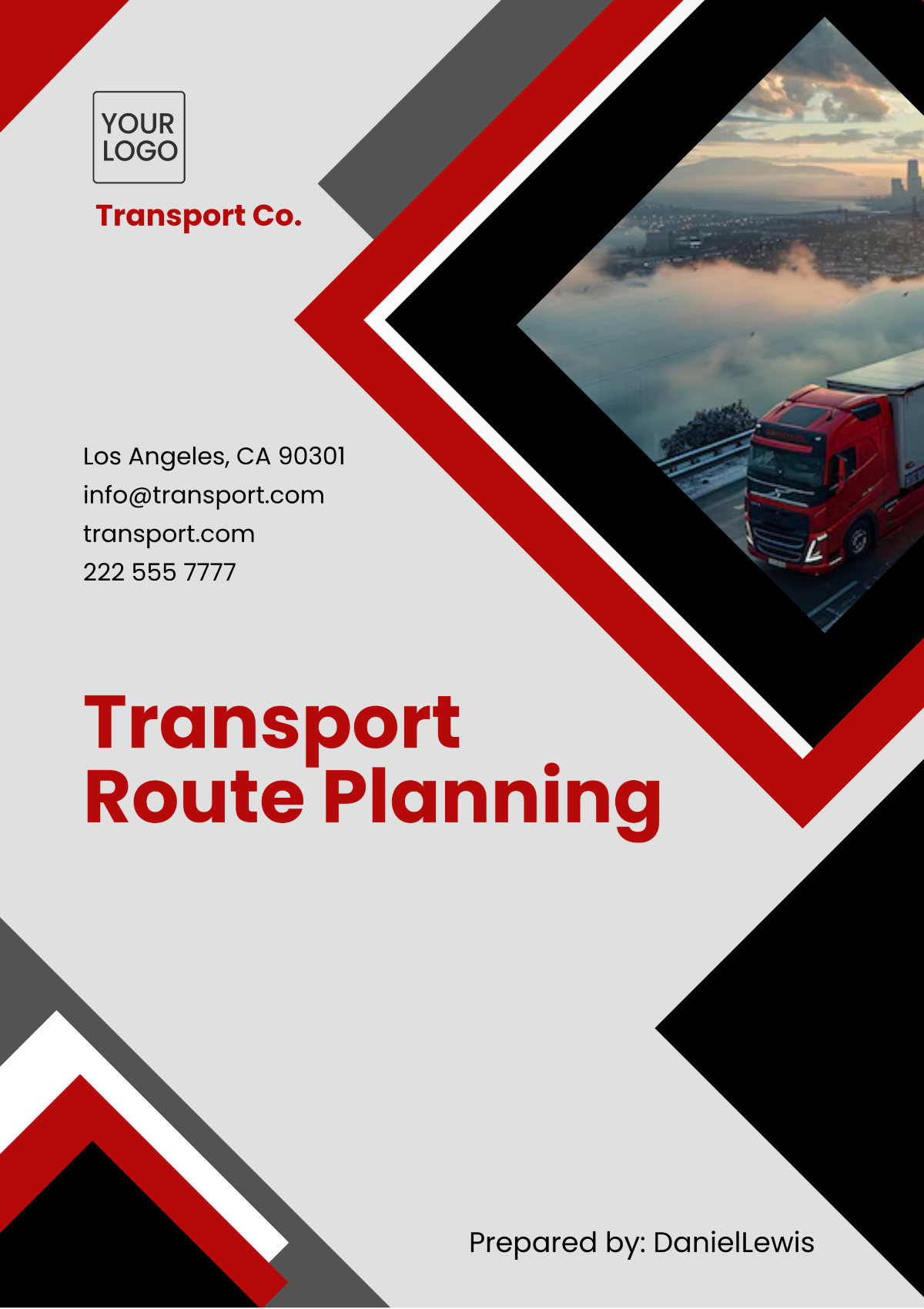
1. Introduction
Transport route planning is a cornerstone of efficient logistics and supply chain management. As we advance towards the year [2050] and beyond, the complexity and demands of route planning will only increase. This document provides a detailed analysis of transport route planning, exploring its objectives, components, advanced technologies, best practices, and future trends. Our goal is to equip [Your Company Name] with the knowledge and tools needed to optimize transport routes effectively, ensuring cost efficiency, timely deliveries, and sustainability.
2. Objectives of Transport Route Planning
2.1. Efficiency and Cost Reduction
Optimizing transport routes is vital for achieving operational efficiency and reducing costs. Effective route planning minimizes fuel consumption, vehicle maintenance, and labor expenses. By selecting the most efficient routes, [Your Company Name] can:
Reduce Fuel Consumption: Efficient routes lower the distance traveled, which directly reduces fuel usage and costs.
Decrease Vehicle Wear and Tear: Shorter and smoother routes reduce the strain on vehicles, extending their lifespan and decreasing maintenance costs.
Lower Labor Costs: Optimized routes lead to shorter delivery times, allowing drivers to complete more deliveries in less time, thereby reducing labor expenses.
2.2. Improved Delivery Times
Timely deliveries are crucial for maintaining customer satisfaction and building a strong reputation. Effective route planning ensures that:
Adherence to Delivery Windows: Routes are planned to meet specific delivery windows, improving reliability and customer trust.
Reduced Delays: By avoiding congested or problematic areas, deliveries are completed on schedule, minimizing delays and disruptions.
Enhanced Scheduling: Efficient route planning allows for better scheduling of deliveries, reducing the likelihood of missed deadlines.
2.3. Environmental Impact
Sustainability is a key consideration in modern transport route planning. Optimized routes contribute to:
Lower Emissions: Reducing travel distance and idling time decreases greenhouse gas emissions, supporting environmental goals.
Compliance with Regulations: Adhering to environmental regulations and standards helps avoid penalties and aligns with corporate sustainability initiatives.
Resource Conservation: Efficient use of resources, such as fuel and energy, supports long-term environmental sustainability.
2.4. Safety and Compliance
Ensuring safety and compliance is essential for mitigating risks and avoiding legal issues. Effective route planning:
Avoids Hazardous Areas: Routes are planned to avoid high-risk zones, such as accident-prone areas or regions with poor road conditions.
Adheres to Regulations: Compliance with road regulations, including weight limits and road closures, reduces the risk of legal complications and fines.
Enhances Driver Safety: Safe routes contribute to overall driver safety, reducing the likelihood of accidents and improving working conditions.
3. Key Components of Route Planning
3.1. Data Collection
Accurate data collection is fundamental for effective route planning. The key data components include:
3.1.1. Geographic Information System (GIS) Data
GIS data provides detailed spatial information crucial for route planning. This includes:
Road Networks: Maps and data on road infrastructure, including highways, local roads, and alternative routes.
Geographic Features: Information on natural features like rivers, mountains, and forests that may impact routing.
Infrastructure: Data on rest stops, fuel stations, and maintenance facilities along the route.
3.1.2. Traffic Data
Real-time and historical traffic data are essential for optimizing routes. This includes:
Current Traffic Conditions: Information on traffic congestion, accidents, and road closures.
Historical Traffic Patterns: Data on traffic trends over time, which helps predict peak traffic periods and potential delays.
Incident Reports: Real-time updates on road incidents that may affect travel times and route choices.
3.1.3. Vehicle Data
Vehicle-specific data helps tailor routes to individual vehicle capabilities. Key considerations include:
Fuel Efficiency: Information on the vehicle’s fuel consumption rates, which impacts route planning to minimize fuel costs.
Load Capacity: Data on the maximum load the vehicle can carry, which influences route selection based on weight limits and road restrictions.
Maintenance History: Records of vehicle maintenance, which help in planning routes that minimize wear and tear.
3.2. Route Optimization Algorithms
Advanced algorithms are used to determine the best routes based on various criteria.
3.2.1. Shortest Path Algorithms
Shortest path algorithms are used to find the least distance between two points. Examples include:
Dijkstra’s Algorithm: Finds the shortest path from a single source to all other nodes in a graph, considering edge weights.
A Algorithm:* An extension of Dijkstra’s that uses heuristics to improve performance by estimating the cost to the destination.
3.2.2. Time-Dependent Algorithms
Time-dependent algorithms account for variations in traffic conditions. Examples include:
Dynamic Programming: Solves the route optimization problem by breaking it into simpler subproblems, considering time-dependent factors.
Time-Dependent Shortest Path: Adjusts path calculations based on real-time traffic data and expected future conditions.
3.2.3. Multi-Objective Optimization
Multi-objective optimization addresses multiple criteria simultaneously. Techniques include:
Genetic Algorithms: Use evolutionary processes to find optimal solutions considering multiple objectives.
Simulated Annealing: Mimics the annealing process in metallurgy to find solutions that balance cost, time, and other factors.
3.3. Route Evaluation
Evaluating routes involves assessing various factors to ensure the best choice.
3.3.1. Cost Analysis
Cost analysis involves evaluating the financial implications of different routes. Key aspects include:
Fuel Costs: Estimating fuel expenses based on distance, fuel efficiency, and current fuel prices.
Tolls and Fees: Calculating tolls, fees, and other charges associated with different routes.
Operational Costs: Assessing costs related to vehicle maintenance, driver wages, and other operational expenses.
3.3.2. Time Analysis
Time analysis focuses on travel time and related factors. Key considerations include:
Estimated Travel Time: Calculating the time required to travel each route, including potential delays and stops.
Time Window Adherence: Ensuring routes meet specific delivery windows and scheduling requirements.
Efficiency of Stops: Analyzing the efficiency of planned stops for fuel, rest, and loading/unloading.
3.3.3. Risk Assessment
Risk assessment involves identifying and mitigating potential risks associated with different routes. Key aspects include:
Hazard Identification: Assessing risks related to road conditions, weather, and other factors.
Safety Measures: Implementing safety measures to avoid hazardous areas and ensure driver safety.
Contingency Planning: Developing contingency plans for unexpected events such as road closures or vehicle breakdowns.
4. Advanced Technologies in Route Planning
4.1. Artificial Intelligence (AI)
AI technologies are transforming route planning by providing advanced capabilities.
4.1.1. Predictive Analytics
Predictive analytics uses historical data and AI models to forecast future conditions. Key benefits include:
Traffic Predictions: Forecasting traffic conditions to adjust routes proactively and avoid congestion.
Demand Forecasting: Predicting demand fluctuations to optimize delivery schedules and resource allocation.
Disruption Management: Anticipating potential disruptions and developing contingency plans.
4.1.2. Machine Learning
Machine learning enhances route planning by learning from historical data. Key applications include:
Pattern Recognition: Identifying patterns in traffic, weather, and vehicle performance to improve route accuracy.
Adaptive Algorithms: Adapting route planning algorithms based on new data and changing conditions.
Continuous Improvement: Using machine learning to continuously refine and improve route planning processes.
4.2. Autonomous Vehicles
Autonomous vehicles are revolutionizing transport route planning by introducing new capabilities.
4.2.1. Route Adaptation
Autonomous vehicles use advanced sensors and AI to adapt routes in real-time. Key features include:
Obstacle Detection: Automatically detecting and avoiding obstacles on the road.
Dynamic Routing: Adjusting routes based on real-time traffic and road conditions.
Self-Optimization: Continuously optimizing routes based on vehicle performance and external factors.
4.2.2. Fleet Management
Managing fleets of autonomous vehicles involves:
Centralized Planning: Coordinating routes for multiple autonomous vehicles to optimize fleet efficiency.
Dynamic Scheduling: Adjusting schedules based on real-time data and operational needs.
Resource Allocation: Allocating resources effectively, including charging stations and maintenance facilities.
4.3. Internet of Things (IoT)
IoT technologies enhance route planning through real-time data integration and smart infrastructure.
4.3.1. Real-Time Data Integration
IoT devices provide real-time data that informs route planning. Key benefits include:
Vehicle Tracking: Real-time tracking of vehicle location and performance.
Traffic Monitoring: Continuous monitoring of traffic conditions and road incidents.
Environmental Data: Collecting data on weather and environmental conditions that impact routing.
4.3.2. Smart Infrastructure
Smart infrastructure includes connected systems that support route planning. Key components include:
Intelligent Traffic Signals: Traffic signals that adjust based on real-time traffic conditions.
Dynamic Road Signs: Road signs that provide real-time information to drivers, such as speed limits and detours.
Connected Rest Areas: Facilities that provide real-time information on availability and services.
4.4. Blockchain Technology
Blockchain technology provides enhanced security and transparency in route planning.
4.4.1. Data Security
Blockchain ensures the security and integrity of route planning data. Key benefits include:
Tamper-Proof Records: Data is secured against tampering and unauthorized access.
Decentralized Ledger: A decentralized ledger provides transparency and reduces the risk of data manipulation.
Secure Transactions: Ensuring secure transactions and data exchanges between stakeholders.
4.4.2. Transaction Tracking
Blockchain tracks transactions related to logistics. Key applications include:
Toll Payments: Secure and transparent tracking of toll payments and related expenses.
Cargo Tracking: Real-time tracking of cargo status and location.
Audit Trails: Creating audit trails for route planning decisions and transactions.
5. Best Practices in Route Planning
5.1. Regular Data Updates
Maintaining accurate and current data is crucial for effective route planning.
5.1.1. Updating Traffic Data
Regular updates to traffic data ensure accuracy in route planning. Key practices include:
Real-Time Integration: Integrating real-time traffic data from various sources, such as sensors and traffic management systems.
Historical Data Updates: Periodically updating historical traffic data to reflect changing patterns and trends.
Incident Reporting: Incorporating real-time incident reports to adjust routes dynamically.
5.1.2. Vehicle and Route Data
Keeping vehicle and route data current helps in optimizing routes. Key practices include:
Regular Maintenance Checks: Updating vehicle data based on maintenance and performance reports.
Route Data Review: Periodically reviewing and updating route information to reflect changes in infrastructure and road conditions.
Driver Feedback: Collecting feedback from drivers to identify and address issues with current routes.
5.2. Scenario Planning
Scenario planning involves preparing for various potential situations to enhance route planning.
5.2.1. Contingency Plans
Developing contingency plans ensures readiness for unexpected events. Key considerations include:
Alternative Routes: Identifying and planning alternative routes for potential road closures or disruptions.
Emergency Procedures: Establishing procedures for handling emergencies, such as vehicle breakdowns or accidents.
Backup Resources: Ensuring availability of backup resources, such as additional vehicles or drivers, in case of disruptions.
5.2.2. Simulation and Testing
Simulating different scenarios and testing routes helps identify potential issues. Key practices include:
Scenario Simulations: Running simulations for various traffic and road conditions to test route effectiveness.
Route Testing: Conducting real-world tests of planned routes to identify and address potential problems.
Performance Analysis: Analyzing the performance of different routes based on test results and simulations.
5.3. Collaboration and Communication
Effective collaboration and communication are essential for successful route planning.
5.3.1. Coordination with Stakeholders
Coordination with various stakeholders ensures smooth route planning and execution. Key practices include:
Driver Coordination: Ensuring drivers are aware of planned routes, schedules, and any changes.
Dispatcher Communication: Maintaining clear communication with dispatchers to manage routes and handle any issues.
Customer Engagement: Keeping customers informed about delivery schedules and any potential delays.
5.3.2. Feedback Mechanisms
Implementing feedback mechanisms allows for continuous improvement in route planning. Key practices include:
Driver Feedback: Collecting feedback from drivers on route efficiency, safety, and overall satisfaction.
Customer Feedback: Gathering feedback from customers regarding delivery performance and service quality.
Performance Reviews: Regularly reviewing performance data and feedback to identify areas for improvement.
5.4. Compliance with Regulations
Adhering to regulations is crucial for legal and operational compliance.
5.4.1. Adhering to Local Regulations
Compliance with local regulations ensures safe and legal operations. Key considerations include:
Road Restrictions: Understanding and adhering to road restrictions, such as weight limits and vehicle size restrictions.
Environmental Regulations: Complying with environmental regulations, including emission standards and pollution control measures.
Permitting Requirements: Obtaining necessary permits for specific routes or vehicle types.
5.4.2. International Standards
For international routes, adhering to international standards is essential. Key considerations include:
Customs Regulations: Understanding and complying with customs regulations for cross-border shipments.
Cross-Border Rules: Adhering to rules and regulations for international transportation, including vehicle standards and safety requirements.
International Agreements: Following international agreements and protocols related to transport and logistics.
6. Future Trends in Transport Route Planning
6.1. Integration with Smart Cities
The development of smart cities will impact transport route planning by integrating advanced technologies and data.
6.1.1. Urban Mobility Solutions
Smart cities will incorporate various urban mobility solutions that affect route planning, including:
Public Transportation Integration: Coordinating with public transportation systems to optimize routes and schedules.
Shared Mobility Services: Integrating with shared mobility services, such as ride-sharing and bike-sharing, to enhance route planning.
Smart Parking Solutions: Utilizing smart parking systems to manage parking availability and reduce congestion.
6.1.2. Data Sharing and Collaboration
Data sharing and collaboration between different entities will enhance route planning in smart cities. Key practices include:
Inter-Agency Collaboration: Collaborating with traffic management centers, city planners, and other stakeholders to share data and improve route planning.
Real-Time Data Exchange: Facilitating real-time data exchange to provide accurate and up-to-date information for route planning.
Public Access: Providing access to relevant data and information for the public to support informed decision-making.
6.2. Sustainable Transport Solutions
Sustainability will play a significant role in future route planning practices.
6.2.1. Electric and Hydrogen Vehicles
The adoption of electric and hydrogen vehicles will impact route planning, requiring considerations for:
Charging Infrastructure: Planning routes with access to charging stations for electric vehicles and refueling stations for hydrogen vehicles.
Energy Efficiency: Optimizing routes for energy efficiency and minimizing the environmental impact of transportation.
Fleet Transition: Managing the transition to electric and hydrogen vehicles within the fleet and adapting route planning accordingly.
6.2.2. Eco-Friendly Routes
Planning eco-friendly routes will become increasingly important for reducing environmental impact. Key practices include:
Low-Emission Areas: Avoiding routes that pass through high-emission zones or areas with poor air quality.
Energy-Efficient Routing: Selecting routes that optimize energy usage and reduce overall emissions.
Green Certifications: Pursuing green certifications and standards for sustainable transport practices.
6.3. Enhanced Personalization
Personalization will improve route planning by catering to individual preferences and requirements.
6.3.1. Custom Route Planning
Custom route planning will consider specific needs and preferences, including:
Delivery Time Windows: Planning routes to meet precise delivery time windows requested by customers.
Vehicle Constraints: Tailoring routes to accommodate specific vehicle constraints, such as size or load capacity.
Customer Preferences: Incorporating customer preferences, such as preferred delivery times or special handling instructions.
6.3.2. Adaptive Systems
Adaptive route planning systems will continuously learn and adjust based on:
Real-Time Adjustments: Adapting routes in real-time based on current conditions, such as traffic and weather.
Historical Data Analysis: Using historical data to improve route recommendations and anticipate potential issues.
Machine Learning: Leveraging machine learning algorithms to refine route planning and enhance accuracy over time.
- 100% Customizable, free editor
- Access 1 Million+ Templates, photo’s & graphics
- Download or share as a template
- Click and replace photos, graphics, text, backgrounds
- Resize, crop, AI write & more
- Access advanced editor
Optimize routes with the Transport Route Planning Template from Template.net. This editable and customizable template assists in planning efficient transport routes. Customize it in our Ai Editor Tool to streamline logistics and improve route efficiency.
